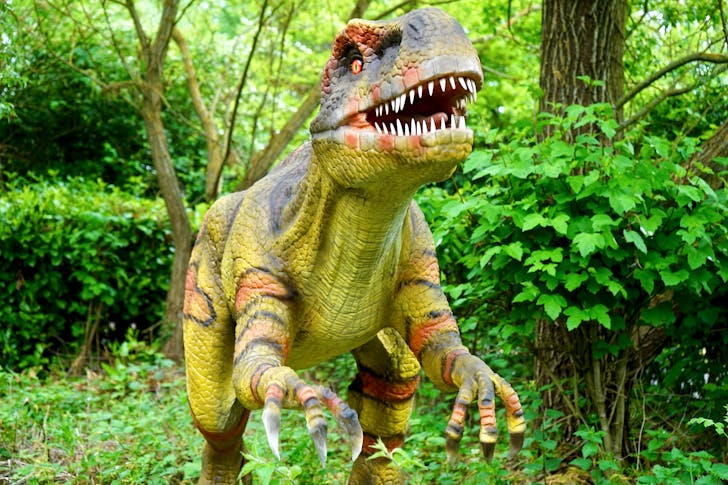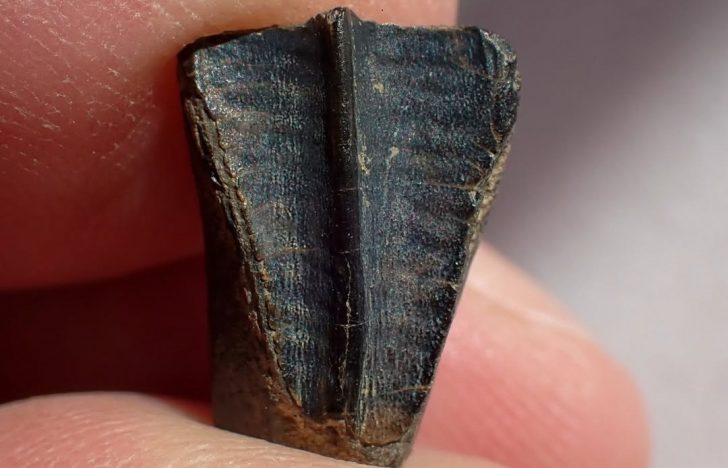A fossil hunter wasn’t expecting to find anything big that day. But when Dr. John Friel spotted a shiny chunk of something in the gravel at Shark Tooth Creek, he knew it wasn’t just another rock. It was the fossilized base of a tooth, about half an inch long.
Not only was it a surprising find, but it was also in a strange place. Shark Tooth Creek is about 50 miles southwest of Tuscaloosa and was once completely underwater. But the dinosaur it belonged to, a hadrosaur, was a land-walker.

Mike / Pexels / Hadrosaurs, also called duck-billed dinosaurs, lived around 84 million years ago during the Cretaceous Period. These herbivores could stretch up to 50 feet long and run faster than many predators.
However, they didn’t live near oceans. These were land animals, wandering ancient forests and floodplains. Yet this tooth was pulled from an area that was underwater back then. Alabama was covered by a shallow sea during much of the dinosaur era, which makes land dinosaur fossils extremely rare in the state.
How Did It Get There?
Most dinosaur fossils found in Alabama likely washed out to sea after the animal died. Bodies would float down rivers and streams, land in salty water, then break apart or get eaten by marine creatures. The odds of a tooth surviving all that and fossilizing are slim. That is what makes this discovery such a big deal.
The hadrosaur tooth somehow made it through that journey. It turned to stone in just the right conditions and stayed hidden for over 80 million years before Dr. Friel spotted its shine in a pile of gravel.
If you are thinking Alabama is the next Jurassic Park, not so fast. Because of its watery past, dinosaur bones are tough to find here. Marine fossils are way more common. Think sharks, fish, and ancient sea reptiles. So when a land dinosaur tooth pops up, scientists pay attention.
The Alabama Museum of Natural History, where the tooth now lives, confirmed it came from a hadrosaur. It is a small piece. But it is enough to expand what we know about which dinosaurs lived in the region and how their remains moved after death.
It is Not Alabama’s First Big Find
This isn’t the first time Alabama surprised paleontologists. In 2016, a team found bones of Eotrachodon orientalis, a very early species of hadrosaur, in Montgomery County. That fossil was a major clue that duck-billed dinosaurs may have started in Appalachia, the eastern half of what is now North America.
The new tooth adds another layer to the story. It proves that hadrosaurs were roaming the land that would become Alabama, even if we rarely find their bones. Each new piece helps researchers fill in gaps in the prehistoric puzzle.

@uamnh / Instagram / Even though it is just a tooth base, this fossil confirms that large herbivorous dinosaurs were present in the region. It also shows that at least some of their remains ended up preserved in marine sediments.
Scientists can now compare it to other hadrosaur teeth found across North America. Every new match helps map out where these animals traveled and how their species changed over time. In science, even the smallest piece can spark a big discovery.
For now, the tooth is part of the museum’s research collection. That means it isn’t on public display yet, but that could change. Since the find stirred up interest, there is talk about adding it to a future exhibit. If that happens, visitors will get to see this rare fossil up close.
Dr. Friel and his team continue studying the find, along with other fossils from Shark Tooth Creek. The site has become a go-to spot for both amateur collectors and researchers.

